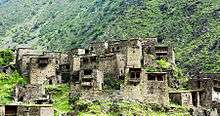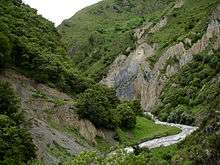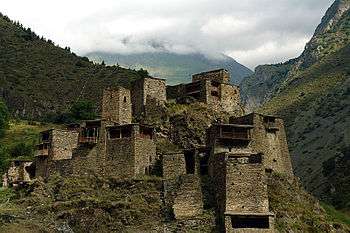Shatili




Shatili (Georgian: შატილი) is a historic highland village in Georgia, near the border with Chechnya. It is located on the northern slope of the Greater Caucasus mountains, in the historical Georgian province of Upper Khevsureti, which is now part of the modern-day region (mkhare) of Mtskheta-Mtianeti.
Geography
Located in the deep Arghuni gorge at approximate 1,400 meters, the village is actually a unique complex of medieval-to-early modern fortresses and fortified dwellings of stone and mortar which functioned both as a residential area and a fortress guarding the northeastern outskirts of the country. The fortress consists of the terraced structures dominated by flat-roofed dwellings and some 60 towers which cluster together to create a single chain of fortifications.
History and current status
Shatili was once part of the Kingdom of Kakheti.
The population of Shatili, along with that of most of the Khevsureti, was resettled under the pressure from the Soviet authorities to the plains in the early 1950s. In the 1960s, the exotic landscape of the empty village was used as a setting for a series of Georgian films about the past life of the highlanders.[1]
Shatili is still inhabited by a dozen or so families, but is inaccessible by road during wintertime. The village is a favourite destination for tourists and mountain trekkers.
See also
Readings
- Shorena Kurtsikidze & Vakhtang Chikovani, Ethnography and Folklore of the Georgia-Chechnya Border: Images, Customs, Myths & Folk Tales of the Peripheries, Munich: Lincom Europa, 2008.
References
- ↑ Bruce Grant & Lale Yalçın-Heckmann (ed., 2008), Caucasus Paradigms: Anthropologies, Histories, and the Making of a World Area, pp. 23-24. Volume 13 of Halle studies in the anthropology of Eurasia. Lit, ISBN 3-8258-9906-3
| Wikimedia Commons has media related to Shatili. |
Coordinates: 42°40′N 45°10′E / 42.66°N 45.16°E